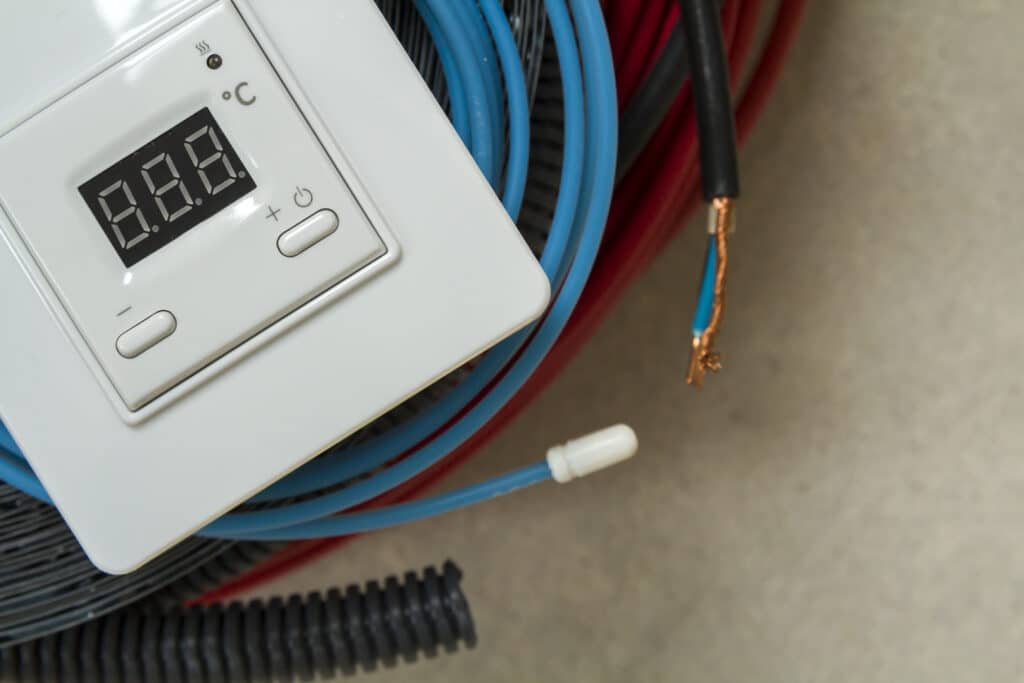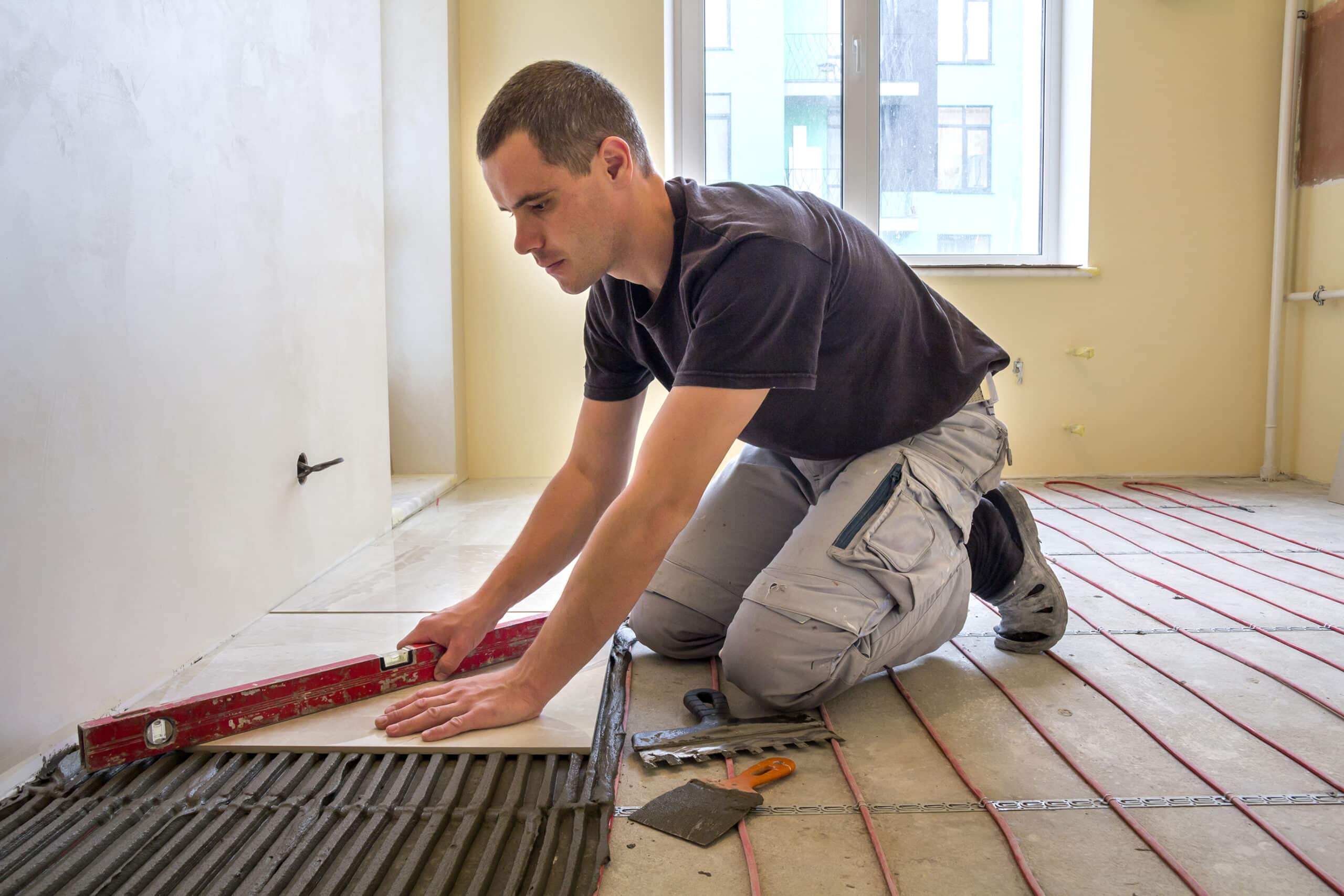Radiant floor heating is a concept that has intrigued me for quite some time. It involves the installation of heating elements beneath the floor surface, allowing warmth to radiate upward into the living space. This method of heating is not only efficient but also provides a level of comfort that traditional heating systems often struggle to achieve.
I find it fascinating how this system operates on the principle of thermal radiation, where heat is transferred directly from the floor to the objects and people in the room, creating a cozy environment without the drafts or cold spots commonly associated with forced-air systems. As I delve deeper into the mechanics of radiant floor heating, I discover that there are two primary types: electric and hydronic systems. Electric systems utilize electric cables or mats installed under the flooring, while hydronic systems circulate warm water through pipes laid beneath the floor.
Each system has its unique advantages and applications, making it essential for me to understand the differences when considering radiant floor heating for my home. The versatility of this heating method allows it to be integrated into various types of flooring, from tile to hardwood, which adds to its appeal.
The Main Points
- Radiant floor heating uses a system of pipes or electric coils installed beneath the floor to heat the space, providing a comfortable and efficient heating solution.
- The benefits of floor heating include even heat distribution, energy efficiency, improved air quality, and the ability to work with various types of flooring.
- There are two main types of radiant floor heating systems: hydronic (water-based) and electric. Each has its own advantages and considerations for installation.
- The installation process for radiant floor heating involves careful planning, proper insulation, and working with a professional to ensure the system is installed correctly.
- Maintenance and care for radiant floor heating systems include regular inspections, cleaning, and addressing any issues promptly to ensure optimal performance and longevity.
Benefits of Radiant Floor Heating
One of the most compelling benefits of radiant heating that I appreciate is its ability to provide consistent warmth throughout a room. Unlike traditional heating systems that can create uneven temperatures, radiant heating ensures that every corner of the space feels equally comfortable. I love the idea of stepping onto a warm floor on a chilly morning, as it sets a positive tone for the day ahead.
Another significant advantage of radiant floor heating is its energy efficiency. Since heat rises naturally, radiant systems can operate at lower temperatures compared to conventional heating methods.
This means that I can enjoy a warm home while potentially reducing my energy bills. Additionally, because there are no ducts involved, I can avoid the energy losses associated with ductwork, which can account for a significant portion of heating inefficiencies in traditional systems. The prospect of saving money while enjoying a cozy atmosphere is certainly appealing to me.
Types of Radiant Floor Heating Systems
As I explore the different types of radiant floor heating systems, I realize that each has its own set of characteristics that cater to various needs and preferences. Electric radiant floor heating systems are often easier and quicker to install, making them an attractive option for smaller spaces or renovations. I appreciate how these systems can be installed in specific areas, such as bathrooms or kitchens, where I want targeted warmth without the need for extensive modifications.
On the other hand, hydronic floor heating systems offer a more comprehensive solution for larger areas or entire homes. These systems involve a network of pipes filled with heated water, providing an efficient and effective way to warm up a space. While the installation process may be more complex and time-consuming, I find that the long-term benefits, such as lower operating costs and consistent heat distribution, make it worth considering for my home.
Understanding these distinctions helps me make an informed decision about which system aligns best with my lifestyle and heating needs source.
Installation Process for Radiant Floor Heating
| Installation Process for Radiant Floor Heating |
|---|
| 1. Planning and Design |
| 2. Subfloor Preparation |
| 3. Installation of Insulation |
| 4. Layout and Installation of PEX Tubing |
| 5. Connection to Manifold and Pump |
| 6. Pressure Testing |
| 7. Pouring of Concrete or Installation of Floor Covering |
| 8. System Commissioning and Testing |
The installation process for radiant floor heating is an aspect that piques my curiosity. It typically begins with careful planning and design to ensure that the system will meet my specific heating requirements. I find it essential to assess factors such as room size, insulation levels, and flooring materials before proceeding with installation.
This initial phase sets the foundation for a successful radiant heating system that will perform efficiently over time. Once the planning is complete, the actual installation can commence. For electric systems, this often involves laying out electric cables or mats on the subfloor before covering them with flooring material.
In contrast, hydronic systems require more extensive work, including laying down pipes and connecting them to a boiler or water heater. While I recognize that this process can be labor-intensive, I appreciate the long-term benefits of having a well-installed radiant floor heating system that will provide comfort for years to come.
Maintenance and Care for Radiant Floor Heating
Maintaining radiant floor heating systems is another area where I find myself intrigued. Fortunately, these systems are generally low-maintenance compared to traditional heating methods. For electric systems, regular checks on the electrical connections and ensuring that there are no damaged cables are usually sufficient to keep everything running smoothly.
I appreciate how this simplicity allows me to focus on enjoying the warmth rather than worrying about constant upkeep. For hydronic systems, maintenance involves checking the boiler or water heater and ensuring that there are no leaks in the piping network. Flushing the system periodically can help remove any sediment buildup that may affect performance over time.
While some maintenance tasks may require professional assistance, I find comfort in knowing that with proper care, my radiant floor heating system can operate efficiently and reliably for many years.
Energy Efficiency and Cost Savings with Radiant Floor Heating
Energy efficiency is a topic that resonates deeply with me, especially in today’s world, where sustainability is becoming increasingly important. Radiant floor heating systems stand out as an energy-efficient option due to their ability to operate at lower temperatures while still providing effective warmth. This characteristic not only contributes to a comfortable living environment but also translates into potential cost savings on energy bills.
As I consider the long-term financial implications of installing radiant floor heating, I am encouraged by the prospect of reduced energy consumption. The absence of ductwork means fewer energy losses, allowing me to maximize the efficiency of my heating system. Additionally, many modern radiant systems are compatible with smart thermostats, enabling me to optimize energy usage further by programming temperature settings based on my daily routine.
The combination of comfort and cost savings makes radiant floor heating an appealing choice for my home.
Design Considerations for Floor Heating
When contemplating radiant floor heating for my home, design considerations play a crucial role in my decision-making process. One aspect I must consider is how the system will integrate with my existing flooring choices. Different materials have varying levels of thermal conductivity, which can impact how effectively heat is distributed throughout the space.
For instance, tile and stone floors tend to retain heat well, making them ideal candidates for radiant heating. Moreover, I find it essential to think about how the layout of my rooms will affect heat distribution.
Additionally, I must consider furniture placement and how it may obstruct heat flow from the floor. By taking these design factors into account, I can create a harmonious living environment that maximizes both comfort and aesthetics.
Choosing the Right Flooring for Radiant Floor Heating
Selecting the right flooring material is perhaps one of the most critical decisions I face when implementing radiant floor heating in my home. The compatibility of flooring types with radiant heat can significantly influence both performance and comfort levels. For instance, I find that tile and stone are excellent choices due to their ability to conduct heat efficiently and retain warmth over time.
However, I also want to explore other options like hardwood or laminate flooring. While these materials can be used with radiant heating systems, it’s essential for me to choose products specifically designed for compatibility with such systems to avoid warping or damage over time. Additionally, factors like insulation and underlayment are crucial to ensuring optimal performance.
By carefully selecting flooring materials that work harmoniously with radiant floor heating, I can create a warm and inviting atmosphere in my home while enjoying all the benefits this innovative heating method has to offer.
If you are considering installing radiant floor heating in your home, you may also be interested in learning about the benefits of vinyl plank flooring. In a recent article on mynexthouseproject.com, the advantages of vinyl plank flooring, especially in high-traffic areas like hallways, are discussed. This durable and easy-to-maintain flooring option pairs well with radiant floor heating systems to create a comfortable and stylish living space.
FAQs
What is radiant floor heating?
Radiant floor heating is a heating system that uses a network of pipes or electric heating elements installed beneath the floor to warm the room from the ground up.
How does radiant floor heating work?
Radiant floor heating works by circulating warm water through the pipes or by using electric heating elements to generate heat, which then radiates up through the floor to warm the room.
What are the benefits of radiant floor heating?
Some benefits of radiant floor heating include even heat distribution, energy efficiency, reduced allergens and dust circulation, and the ability to be used with various types of flooring.
What types of flooring are compatible with radiant floor heating?
Radiant floor heating is compatible with a wide range of flooring materials, including tile, stone, laminate, engineered wood, and certain types of carpet.
Is radiant floor heating suitable for all types of buildings?
Radiant floor heating can be installed in both new construction and existing buildings, making it suitable for residential, commercial, and industrial applications.
What are the different types of radiant floor heating systems?
There are two main types of radiant floor heating systems: hydronic systems, which use water to transfer heat, and electric systems, which use electric heating elements to generate heat.
Is radiant floor heating cost-effective?
While the initial installation cost of radiant floor heating may be higher than traditional heating systems, it can be more cost-effective in the long run due to its energy efficiency and lower operating costs.






